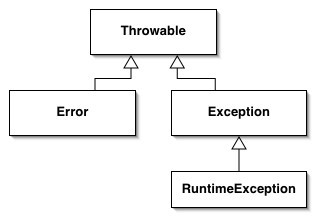4.10内部类
4.10.1内部类的访问规则:
1.内部类可以直接访问外部类中的成员,包括私有。
之所以可以直接访问外部类中的成员,是因为内部类中持有了一个外部类的引用,格式外部类名.this
2.外部类要访问内部类,必须建立内部类对象。
练习一:内部类变量访问
class Outer
{
private int x = 3;
class Inner//内部类
{
int x = 4;
void function()
{
int x = 6;
System.out.println("innner:"+x);
//Outer.this.x 输出结果:3 (外部类变量x)
//this.x 输出结果:4 (内部类变量x)
//x 输出结果:6 (局部变量x)
}
}
void method()
{
Inner in = new Inner();
in.function();
}
}
class InnerClassDemo
{
public static void main(String[] args)
{
Outer out = new Outer();
out.method();
//直接访问内部类中的成员。
// Outer.Inner in = new Outer().newInner();
// in.function();
}
}4.10.2内部类访问格式:
1.当内部类定义在外部类的成员位置上,而且非私有,可以在外部其他类中。
可以直接建立内部类对象。
格式
外部类名.内部类名 变量名 = 外部类对象.内部类对象;
Outer.Innerin = new Outer().new Inner();
2.当内部类在成员位置上,就可以被成员修饰符所修饰。
比如,private:将内部类在外部类中进行封装。
static:内部类就具备static的特性。
当内部类被static修饰后,只能直接访问外部类中的static成员。出现了访问局限。
在外部其他类中,如何直接访问static内部类的非静态成员呢?
new Outer.Inner().function();
在外部其他类中,如何直接访问static内部类的静态成员呢?
Outer.Inner.function();
注意:当内部类中定义了静态成员,该内部类必须是static的。
当外部类中的静态方法访问内部类时,内部类也必须是static的。
练习二:内部类访问格式(静态非静态)
class Outer
{
private static int x = 3;
static class Inner//静态内部类
{
static void function()
{
System.out.println("innner:"+x);
}
}
static class Inner2
{
void show()
{
System.out.println("inner2show");
}
}
public static void method()
{
//Inner.function();
new Inner2().show();
}
}
class InnerClassDemo2
{
public static void main(String[] args)
{
Outer.method();
//Outer.Inner.function();
//newOuter.Inner().function();
//直接访问内部类中的成员。
// Outer.Inner in = new Outer().newInner();
// in.function();
}
}
4.10.3内部类定义在局部时
1.不可以被成员修饰符修饰
2.可以直接访问外部类中的成员,因为还持有外部类中的引用。
但是不可以访问它所在的局部中的变量。只能访问被final修饰的局部变量。
练习三:内部类被定义在局部时,调用常量等情况
class Outer
{
int x = 3;
void method(final int a)
{
final int y = 4; //内部类访问外部变量,局部变量必须被final修饰
class Inner
{
void function()
{
System.out.println(y);
}
}
new Inner().function();
}
}
class InnerClassDemo3
{
public static void main(String[] args)
{
Outer out = new Outer();
out.method(7);//执行后,method函数中a=7,并加锁,执行完释放锁。
out.method(8);//执行后,method函数中a=8,并加锁,执行完释放锁。
}
}
4.10.4匿名内部类:
1.匿名内部类其实就是内部类的简写格式。
2.定义匿名内部类的前提:
内部类必须是继承一个类或者实现接口。
3.匿名内部类的格式: new 父类或者接口(){定义子类的内容}
4.其实匿名内部类就是一个匿名子类对象。而且这个对象有点胖。 可以理解为带内容的对象。
5.匿名内部类中定义的方法最好不要超过3个。(不包含3个,最好1个或者2个)
练习三:创建匿名内部类
abstract classAbs
{
abstract void show();
}
class Outer
{
public void function()
{
new Abs()
{
void show()
{
System.out.println("创建匿名内部类成功");
}
}.show();
}
}
class AbsDemo
{
public static void main(String[] args)
{
new Outer().function();//创建Outer类中
}
}
练习四:补足代码,通过匿名内部类。
interface Inter
{
voidmethod();
}
class Test
{
//补足代码。通过匿名内部类。
/*
static class Inner implements Inter
{
public void method()
{
System.out.println("methodrun");
}
}
*/
static Inter function()
{
return new Inter()
{
public void method()
{
System.out.println("methodrun");
}
};
}
}
class InnerClassTest
{
public static void main(String[] args)
{
//Test.function():Test类中有一个静态的方法function。
//.method():function这个方法运算后的结果是一个对象。而且是一个Inter类型的对象。
//因为只有是Inter类型的对象,才可以调用method方法。
Test.function().method();
// Inter in = Test.function();
// in.method();
show(newInter()
{
public void method()
{
System.out.println("methodshow run");
}
});
}
public static void show(Inter in)
{
in.method();
}
}
class InnerTest
{
public static void main(String[] args)
{
newObject()
{
public void function()
{
}
}.function();
}
}
4.11异常
异常概念:就是程序在运行时出现不正常情况。
异常由来:问题也是现实生活中一个具体的事物,也可以通过java的类的形式进行描述。并封装成对象。
其实就是java对不正常情况进行描述后的对象体现。
对于异常的划分:两种:一种是严重的问题,一种非严重的问题。
对于严重的,java通过Error类进行描述。
对于Error一般不编写针对性的代码对其进行处理。
对与非严重的,java通过Exception类进行描述。
对于Exception可以使用针对性的处理方式进行处理。
无论Error或者Exception都具有一些共性内容。
比如:不正常情况的信息,引发原因等。
Throwable
|--Error
|--Exception
4.11.1异常的处理
java 提供了特有的语句进行处理格式:
/*
try
{
需要被检测的代码;
}
catch(异常类 变量)
{
处理异常的代码;(处理方式)
}
finally
{
一定会执行的语句;
}
*/
4.11.2对捕获到的异常对象进行常见方法操作
getMessage()
获取异常信息,返回字符串。
toString()
获取异常类名和异常信息,返回字符串。
printStackTrace()
获取异常类名和异常信息,以及异常出现在程序中的位置。返回值void。
printStackTrace(PrintStream s)
通常用该方法将异常内容保存在日志文件中,以便查阅
在函数上声明异常。
便于提高安全性,让调用出进行处理。不处理编译失败。
4.11.3对多异常的处理
1,声明异常时,建议声明更为具体的异常。这样处理的可以更具体。
2,对方声明几个异常,就对应有几个catch块。不要定义多余的catch块。
如果多个catch块中的异常出现继承关系,父类异常catch块放在最下面。
建立在进行catch处理时,catch中一定要定义具体处理方式。(要有针对性的处理)
不要简单定义一句 e.printStackTrace(),
也不要简单的就书写一条输出语句。
练习五:异常、多异常的处理练习
class Demo
{
int div(int a,int b) throws ArithmeticException,ArrayIndexOutOfBoundsException
//在功能上通过throws的关键字声明了该功能有可能会出现问题。
{
returna/b;
}
}
class ExceptionDemo
{
public static void main(String[] args)
{
Demo d = new Demo();
try
{
int x = d.div(4,1);
System.out.println("x="+x);
}
catch(Exception e)//Exception e = new ArithmeticException();
{
System.out.println("除零啦");
System.out.println(e.getMessage());// / by zero;
System.out.println(e.toString());//异常名称 : 异常信息。
e.printStackTrace();//异常名称,异常信息,异常出现的位置。
//其实jvm默认的异常处理机制,就是在调用printStackTrace方法。
//打印异常的堆栈的跟踪信息。
}
catch (ArrayIndexOutOfBoundsException e)
{
System.out.println(e.toString());
System.out.println("角标越界");
}
System.out.println("over");
}
}
4.11.4自定义异常
因为项目中会出现特有的问题,而这些问题并未被java所描述并封装对象,所以对于这些特有的问题可以按照java的对问题封装的思想。将特有的问题,进行自定义的异常封装。
当在函数内部出现了throw抛出异常对象,那么就必须要给对应的处理动作。
要么在内部try catch处理。
要么在函数上声明让调用者处理。
一般情况在,函数内出现异常,函数上需要声明。
发现打印的结果中只有异常的名称,却没有异常的信息。
因为自定义的异常并未定义信息。
如何定义异常信息?
因为父类中已经把异常信息的操作都完成了。
所以子类只要在构造时,将异常信息传递给父类通过super语句。
那么就可以直接通过getMessage方法获取自定义的异常信息。
自定义异常:
必须是自定义类继承Exception。
继承Exception原因:
异常体系有一个特点:因为异常类和异常对象都被抛出。
他们都具备可抛性。这个可抛性是Throwable这个体系中独有特点。
只有这个体系中的类和对象才可以被throws和throw操作。
4.11.5 throws和throw的区别
throws使用在函数上。
throw使用在函数内。
throws后面跟的异常类。可以跟多个。用逗号隔开。
throw后跟的是异常对象。
练习六:自定义异常练习
class FuShuException extends Exception//getMessage();
{
private int value;
FuShuException()
{
super();
}
FuShuException(Stringmsg,int value)
{
super(msg);
this.value= value;
}
public int getValue()
{
return value;
}
}
class Demo
{
int div(int a,int b)throws FuShuException
{
if(b<0)
thrownew FuShuException("出现了除数是负数的情况------ / by fushu",b);
//手动通过throw关键字抛出一个自定义异常对象。
return a/b;
}
}
class ExceptionDemo3
{
public static void main(String[] args)
{
Demo d = new Demo();
try
{
int x = d.div(4,-9);
System.out.println("x="+x);
}
catch(FuShuException e)
{
System.out.println(e.toString());
//System.out.println("除数出现负数了");
System.out.println("错误的负数是:"+e.getValue());
}
System.out.println("over");
}
}
4.11.6 特殊的异常RuntimeException
Exceptoin中有一个特殊的子类异常RuntimeException运行时异常。
如果在函数内容抛出该异常,函数上可以不用声明,编译一样通过。
如果在函数上声明了该异常。调用者可以不用进行处理。编译一样通过;
之所以不用在函数声明,是因为不需要让调用者处理。
当该异常发生,希望程序停止。因为在运行时,出现了无法继续运算的情况,希望停止程序后,对代码进行修正。
自定义异常时:如果该异常的发生,无法在继续进行运算,
就让自定义异常继承RuntimeException。
对于异常分两种:
1,编译时被检测的异常。
2,编译时不被检测的异常(运行时异常。RuntimeException以及其子类)
练习六:特殊异常RuntimeException及其子类的练习
class FuShuException extendsRuntimeException
{
FuShuException(Stringmsg)
{
super(msg);
}
}
class Demo
{
int div(int a,int b)//这里不用再抛throws Exception或者throws ArithmeticException
{
if(b<0)
throw new RuntimeException("出现了除数为负数了");
if(b==0)
throw new ArithmeticException("被零除啦");
returna/b;
}
}
class ExceptionDemo4
{
public static void main(String[] args)
{
Demo d = new Demo();
int x = d.div(4,-9);
System.out.println("x="+x);
System.out.println("over");
}
}
练习七:异常应用的练习
/*
毕老师用电脑上课。
开始思考上课中出现的问题。
比如问题是
电脑蓝屏。
电脑冒烟。
要对问题进行描述,封装成对象。
可是当冒烟发生后,出现讲课进度无法继续。
出现了讲师的问题:课时计划无法完成。
*/
class LanPingException extends Exception
{
LanPingException(Stringmessage)
{
super(message);
}
}
class MaoYanException extends Exception
{
MaoYanException(Stringmessage)
{
super(message);
}
}
class NoPlanException extends Exception
{
NoPlanException(Stringmsg)
{
super(msg);
}
}
class Computer
{
private int state = 3;
public void run()throws LanPingException,MaoYanException
{
if(state==2)
thrownew LanPingException("蓝屏了");
if(state==3)
thrownew MaoYanException("冒烟了");
System.out.println("电脑运行");
}
public void reset()
{
state= 1;
System.out.println("电脑重启");
}
}
class Teacher
{
private String name;
private Computer cmpt;
Teacher(Stringname)
{
this.name= name;
cmpt= new Computer();
}
public void prelect()throws NoPlanException
{
try
{
cmpt.run();
}
catch(LanPingException e)
{
cmpt.reset();
}
catch(MaoYanException e)
{
test();
thrownew NoPlanException("课时无法继续"+e.getMessage());
}
System.out.println("讲课");
}
public void test()
{
System.out.println("练习");
}
}
class ExceptionTest
{
public static void main(String[] args)
{
Teachert = new Teacher("毕老师");
try
{
t.prelect();
}
catch(NoPlanException e)
{
System.out.println(e.toString());
System.out.println("换老师或者放假");
}
}
}























 1572
1572

 被折叠的 条评论
为什么被折叠?
被折叠的 条评论
为什么被折叠?








